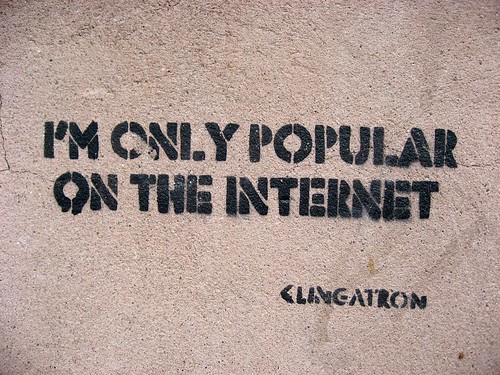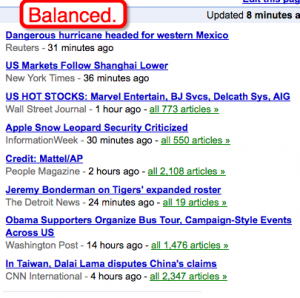The iPad TabletMac MacTouch iSlate will supposedly launch next year, and with it comes the end of an era. For that statement to make any sense, I should probably backtrack a bit and give a little explanation. While considering the impact of this product (should it even exist beyond the labs in Cupertino, that is), I’ve been thinking back on the history and evolution of gadgets. Incidentally, I’m only considering electronic gadgets, but not including computers (or laptops) nor kitchen-related items (pretty much everything in the modern kitchen is some kind of gadget). I’ve grouped them (in my own mind) into three major phases, and in pure Tolkienish geeky wonderfulness, I’m calling them Ages.
The First Age
 Definition: For sake of discussion, I’ll define the First Age of Gadgets as starting with calculators and LCD watches (and, of course, calculator watches). Sticklers will quickly point out something I’m missing, but in my opinion that’s when the concept of “gadgets” really got kicking. These products (1) required batteries and (2) did one thing, typically pretty well. These early gadgets were typically fairly functional in nature, not very gimmicky or showy. They were also workhorses as compared to modern products – you can drop most “old school” products and not fear for significant damage (probably directly related to LED or single-line LCD outputs).
Definition: For sake of discussion, I’ll define the First Age of Gadgets as starting with calculators and LCD watches (and, of course, calculator watches). Sticklers will quickly point out something I’m missing, but in my opinion that’s when the concept of “gadgets” really got kicking. These products (1) required batteries and (2) did one thing, typically pretty well. These early gadgets were typically fairly functional in nature, not very gimmicky or showy. They were also workhorses as compared to modern products – you can drop most “old school” products and not fear for significant damage (probably directly related to LED or single-line LCD outputs).
Timeframe: roughly the early 1970s all the way into the 1990s. That said, many products came out in the ’90s that would still be considered First Age gadgets, per the definition above.
Defining gadget: tie between Walkman and Game Boy. Both effectively defined a product category, and still do to this day in most respects. It’s far too easy to argue that the iPod is just a “modern” Walkman, and ditto for the DS/PSP.
Memorable gadgets: Mattel Football, Atari 2600, NES, Speak and Spell (the first DSP was inside it), the Polaroid instant camera, and HP calculators (they could graph stuff!), DiscMan (also great, but not as revolutionary as the WalkMan).
The Second Age
 Definition: In a nutshell: USB connectivity and/or card reader integration. Slightly more detailed: the Second Age of gadgets is about products that were able to connect and/or share data with a computer (but did not include WiFi) and/or cell phones. Gadgets started becoming a little more pervasive, a little more mainstream, a lot more pop culture. In addition to the gadgets themselves, the category of gadget accessories really began to boom (chargers, carrying case, rechargeable batteries, etc). This was also the dawn of the gadget blogs. I asked Peter Rojas, founder of Gizmodo, if he could recall why he launched the site: “It was an experiment, something Nick and I started almost by accident. I don’t think either of us thought blogging would become as big as it did. People are a LOT more interested in gadgets now than when I started Gizmodo in 2002 – it’s become part of pop culture.”
Definition: In a nutshell: USB connectivity and/or card reader integration. Slightly more detailed: the Second Age of gadgets is about products that were able to connect and/or share data with a computer (but did not include WiFi) and/or cell phones. Gadgets started becoming a little more pervasive, a little more mainstream, a lot more pop culture. In addition to the gadgets themselves, the category of gadget accessories really began to boom (chargers, carrying case, rechargeable batteries, etc). This was also the dawn of the gadget blogs. I asked Peter Rojas, founder of Gizmodo, if he could recall why he launched the site: “It was an experiment, something Nick and I started almost by accident. I don’t think either of us thought blogging would become as big as it did. People are a LOT more interested in gadgets now than when I started Gizmodo in 2002 – it’s become part of pop culture.”
Timeframe: late 1990s to mid-2000’s. Obviously there were definitely earlier cell phones and we still have completely disconnected gadgets coming to market today, but this is still a fairly definable time. Interesting, I referred to this timeframe in another “look back” kind of post last year.
Defining gadget: tough call, but it’s the iPod. No other device was so utterly perfect at the concept of end-to-end interaction between the device and the computer.
Memorable gadgets: TiVo, Motorola StarTac and RAZR, PalmPilot and Palm V, Sony PlayStation, Rio mp3 players (especially the Karma), Casio Exilim and Sony U10/U20 digital cameras, Creative Nomad Jukebox, Garmin Nuvi.
The Third Age
 Definition: Internet access and connectivity. Devices had either built-in Internet access, or some hybrid method of interacting with the Internet to share content, data, or services. In many cases Third Age devices are simple evolutions to their predecessors, but some innovated distinctly enough so that there’s no blurry lines. Just as the USB-only devices evolved to a point of wacky ideas, we’ve already seen the same thing begin to occur in the current era.
Definition: Internet access and connectivity. Devices had either built-in Internet access, or some hybrid method of interacting with the Internet to share content, data, or services. In many cases Third Age devices are simple evolutions to their predecessors, but some innovated distinctly enough so that there’s no blurry lines. Just as the USB-only devices evolved to a point of wacky ideas, we’ve already seen the same thing begin to occur in the current era.
Timeframe: mid-2000’s to 2010.
Defining gadget: This is a debatable call, but I’m going to go with the BlackBerry. It truly ushered in the notion of a converged device with phone and Internet access, and was the major game changer of usage behaviors with regards to mobile devices. Obviously the iPhone has had its own impact, but one could argue that (1) the BlackBerry is a clear success, and (2) the iPhone might never have come out without it.
Memorable gadgets: iPhone (see, it’s there!), Xbox 360, Harmony 880 remote, Slingbox (disclosure: I built it, so I’m biased, but I think it belongs on the list!), Sonos (disclosure: I have worked with Sonos in the past, but again, I think it’s hard to argue that any other product has so well integrated the Internet and personal media and home gadgets), Eye-Fi (like it or don’t, but it certainly opened new concepts), the Flip, the Kindle. Oh, and of course the Twitterpeek (just kidding).
The Fourth Age
Regardless of the iSlate, we are at the brink of a new generation of gadgets that utterly change the way we think of technology and mobility. Internet access and data synchronization/sharing will be considered ubiquitous and pervasive across new devices. I consider gadgets like the FitBit right on the fringe of what I’m talking about – designed for a connected life, but don’t focus on a typical way of being used. My expectations for what I’m calling the Fourth Age of gadgets center around three major changes and improvements in displays, inputs, and power.
 Displays: I assume we’ll be seeing flexible display surfaces (folding, roll-up, etc) that change the way we physically interact with a device. The concept of a hard, flat screen (even a touchable one) seems very outdated to me. I think the real revolutionary tablet will be the first one with some form of flexible display (and my money’s on Apple for making this happen). I also foresee better use of microprojectors to remove the need for an on-board display at all.
Displays: I assume we’ll be seeing flexible display surfaces (folding, roll-up, etc) that change the way we physically interact with a device. The concept of a hard, flat screen (even a touchable one) seems very outdated to me. I think the real revolutionary tablet will be the first one with some form of flexible display (and my money’s on Apple for making this happen). I also foresee better use of microprojectors to remove the need for an on-board display at all.
Input: Next generation products should have inputs much more interesting than just a keyboard. Let’s assume the concept of gestures is one good starting point, but it really needs to be taken further than the pinching and scrolling effect. I’m also anticipating more use of optical recognition (like Natal uses) to simple “watch” the user control a device – gestures are even more interesting when you don’t have to touch a screen. Voice recognition and input is basically already here, but yet to be fully put to work (thanks David for that suggestion). Another is more interesting uses of accelerometers and motion sensors, where a gadget is interacted with simply by how you move it around.
Power: I consider batteries, even the most modern Li-Ion ones, one of the key deficiencies in gadget design. Batteries create massive inefficiencies in cost structure, environmental impact, and product usage. As a stopgap solution, I am a fan of the wireless charging concepts, but that’s really just a big bandaid in my opinion. We are right around the corner from making rechargeable fuel cell based devices very feasible. This is a good step, but I’m anticipating some more monumental leaps. As per my thoughts on flexible displays, I think the materials sciences engineers out there are cooking up some very innovative solutions to make gadgets last longer, weigh less, and be notably cheaper to produce.
For a little sanity check, I asked Josh Topolsky, Editor-in-Chief of Engadget, his opinion:
“I think we’re just starting to scratch the surface of what’s possible in mobile computing (non-laptop, non-traditional computing, that is). Smartphones are in their infancy, tablets are non-existent; what we’ve seen in demos only just begins to show the potential in this space. When manufacturers can add the horsepower and bandwidth needed to those devices without sacrificing battery life or design, our perception of computing will shift dramatically. Multitouch interfaces and UI concepts that involve more than just moving boxes around on a screen will completely upend our ideas about how you interact with the machine; gadgets like the iPhone and Surface have already sparked that fire. In just a few years (say, less than five), I expect that using a laptop or desktop computer will seem quaint, or worse: antiquated.”
Personally, I’m excited about the future. I’m just ever-so-bored of the current state of gadget affairs. The iPhone has just sucked the life out of real innovation, and everyone’s playing a pretty boring game of catchup, with the occasional attempt to one-up Apple. The problem is the giants of CE are acting like big sluggish organizations, and the cost structures have been prohibitive to enable startups to find easy paths to success, with few exceptions to these rules. Hence why we in the Third Age we have One Phone to Rule Them All. But 10 years ago we’d have bet on Sony, not Apple, to lead the revolution. I wonder who will lead us on the road ahead (and if we’ll see it at CES 2010?).

 I’ve spent a few
I’ve spent a few  Twitter Lists are all the rage. The shiny new object. The hot new thing. For at least the next day or so… They’re a practical way to manage people you follow, and, of course, yet another mechanism to drive one’s ego and other forms of self-indulgence. Especially since they aren’t even open to all
Twitter Lists are all the rage. The shiny new object. The hot new thing. For at least the next day or so… They’re a practical way to manage people you follow, and, of course, yet another mechanism to drive one’s ego and other forms of self-indulgence. Especially since they aren’t even open to all  As a “connected gadget guy” I had heard a few rumors that Peek (the company blissfully unaware that people generally do like BlackBerries, and I don’t much care that it’s on Oprah’s list – the future is smartphones and it isn’t slowing down anytime soon) was coming out with a Twitter-only device. I scoffed at most of these comments, as it sounded so… odd. As I stated about the WikiReader last week, in the mobile space converged devices are hands-down beating out single purpose devices.
As a “connected gadget guy” I had heard a few rumors that Peek (the company blissfully unaware that people generally do like BlackBerries, and I don’t much care that it’s on Oprah’s list – the future is smartphones and it isn’t slowing down anytime soon) was coming out with a Twitter-only device. I scoffed at most of these comments, as it sounded so… odd. As I stated about the WikiReader last week, in the mobile space converged devices are hands-down beating out single purpose devices.

 In an interesting move, the FTC has created a
In an interesting move, the FTC has created a  When I was a kid we had regular meals at my grandparents’ house. Much of the food was delicious (in my memories if nothing else), with the glaring exception of my grandmother’s creamed spinach. Granted, it wasn’t there with every serving, but when it came, I shuddered. I literally couldn’t stomach it, and played little tricks to “hide” it on the plate, the table, the floor, or, best of all, someone else’s plate. I hated it, and it’s the only food to stand out in my memory as something so loathed. But I’m sure everyone has a similar dish, or possibly even an entire food group, they disliked when they were children.
When I was a kid we had regular meals at my grandparents’ house. Much of the food was delicious (in my memories if nothing else), with the glaring exception of my grandmother’s creamed spinach. Granted, it wasn’t there with every serving, but when it came, I shuddered. I literally couldn’t stomach it, and played little tricks to “hide” it on the plate, the table, the floor, or, best of all, someone else’s plate. I hated it, and it’s the only food to stand out in my memory as something so loathed. But I’m sure everyone has a similar dish, or possibly even an entire food group, they disliked when they were children.


 With
With 
